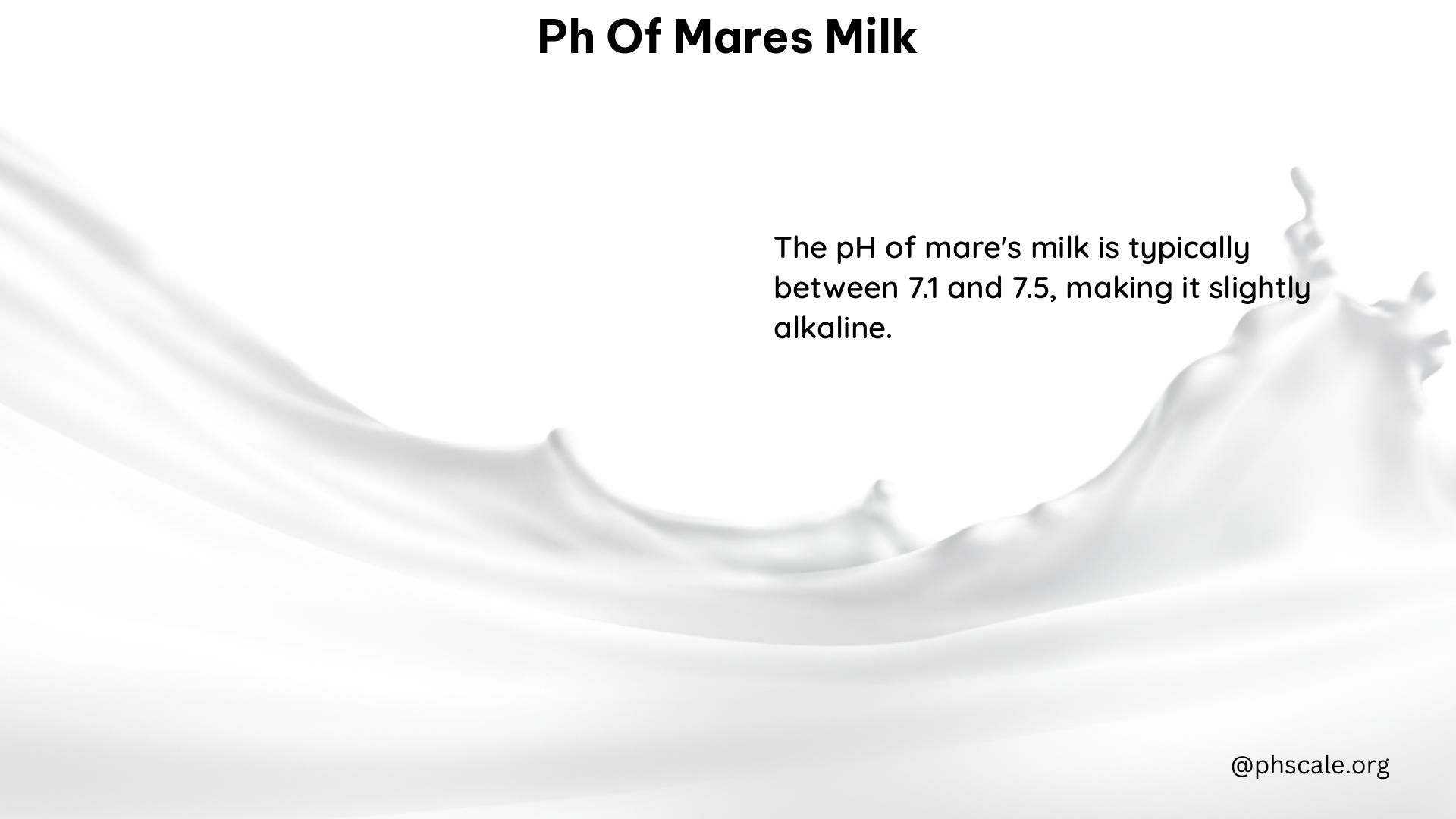The pH of a mare’s milk is a crucial indicator for predicting the timing of foaling, a critical event in the life of a horse. By understanding the pH range, testing methods, and other associated factors, horse owners and veterinarians can better prepare for the arrival of a new foal. This comprehensive guide delves into the intricacies of mare’s milk pH, providing valuable insights to ensure a smooth and successful foaling process.
Understanding the pH Range of Mare’s Milk
The pH of mammary fluid from pregnant mares typically remains around 7.4 for several days leading up to the time of foaling. However, as the foaling process approaches, the pH drops significantly. Within 12 hours prior to foaling, the pH can decrease to approximately 6.4. In some cases, the pH may even drop as low as 6.6 or 6.2 in the final hours before the mare gives birth.
| Time Before Foaling | pH Range |
|---|---|
| Several days | ~7.4 |
| 12 hours | ~6.4 |
| Final hours | 6.6-6.2 |
Measuring the pH of Mare’s Milk

Accurately measuring the pH of a mare’s milk is crucial for predicting the timing of foaling. This can be done using an electronic pH meter or pH paper. For the best results, it is recommended to use pH paper with a narrow range of measurement, typically from 5.5 to 8.0 in increments of 0.1 or 0.2 units.
Predicting Foaling Based on pH
The pH of a mare’s milk is a reliable indicator of the impending foaling process. If the pH is less than or equal to 6.4, the mare has a 97.7% likelihood of foaling within the next 72 hours. Conversely, pH values greater than 6.4 correspond to a 99.4% chance that the mare will not foal within the next 24 hours.
Additional Indicators of Foaling
While the pH of mare’s milk is a primary indicator, there are other signs that can help predict the timing of foaling. These include:
- Increased calcium levels in the milk
- Mammary gland development
- Relaxation of the croup muscles
- Teats distending with colostrum
- Waxing or dripping from the teats
Maintaining Cleanliness and Hygiene
When collecting milk samples for pH testing, it is essential to maintain a high level of cleanliness and hygiene. Contaminants or chemicals present in the milk can affect the accuracy of the pH readings. Proper sanitation and handling procedures are crucial to ensure reliable results.
Conclusion
The pH of a mare’s milk is a valuable tool for predicting the timing of foaling. By understanding the pH range, testing methods, and other associated indicators, horse owners and veterinarians can better prepare for the arrival of a new foal. Regular monitoring of the mare’s milk pH, combined with a clean and healthy environment, can contribute to a successful foaling experience.
References:
- Wright, D. E. (2016). Can foaling be predicted within 24-hours by testing the pH of the mare’s milk? Oklahoma State University. https://shareok.org/bitstream/handle/11244/52372/oksd_wright_HT_2016.pdf?isAllowed=y&sequence=1
- Veterinary Partner. (2013). pH Testing of Milk Predicts Foaling Time In Mares. https://veterinarypartner.vin.com/default.aspx?catId=102906&id=4952321&pid=19239
- The Horse. (2017). Mammary Gland Secretion pH Could Predict Foaling. https://thehorse.com/110070/mammary-gland-secretion-ph-could-predict-foaling/
- McCue, P. M. (2021). Assessment of pH of Mammary Gland Secretions to Predict Foaling. https://onlinelibrary.wiley.com/doi/pdf/10.1002/9781119556015.ch90
- Animal Reproduction Systems. (n.d.). Colostrum 101 – Predicting Foaling. https://arssales.com/predicting_foaling.html
